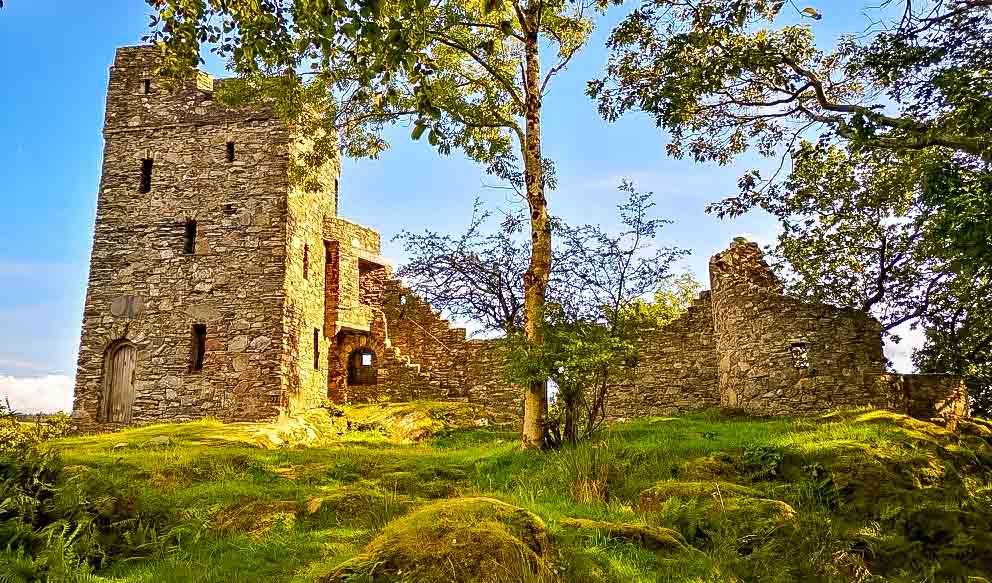Our most recent family holiday this year was to Wales, to be honest you can’t really go to a better place in the UK for a short break.
As a child we used to go every year for our family holidays to Anglesey, many happy memories made there too.

Our daughter picked the accommodation as we couldn’t decide between us where to stay and it proved to be very pleasant indeed. It was in a cosy mid terrace cottage in a village called Carreg, Llanfrothen.
The location was ideal for seeing local popular sites and also based in the Snowdonia National Park – we could see Mount Snowdon from the front door. I had planned to attempt Snowdon, but due to bursitis in my hip, had to decline.

Hubby made a brave attempt and got ¾ way up before calling it a day. Daughter and I instead went to Blaenau Ffestiniog on the train and spent a very pleasant couple or hours admiring the slate hills, the surrounding scenery and of course visiting tea shops.
I can recommend a trip on this train taking in brilliant views and there are also refreshments available on board too.

We had lots of planned visits for the week and things to see such as Porthmadog, Portmeirion, Harlech Castle, Blaenau Ffestiniog, Beddgelert and much more. There’s so much to see and do in this beautiful part of the country.

Near to where we were staying there were a few places to see within easy walking distance such as very pretty waterfalls but also the country house and gardens at Plas Brondanw (on the road to the village of Croesor).
This was the family home of Sir Clough Williams-Ellis, who was the creator of the Italianate village of Portmeirion.


The architectural styles at both locations are very similar, as well as it being a grade II listed building. Williams-Ellis inherited the run down Plas Brondanw from his father in 1908 when he was 25 and then commenced restoring the house and gardens.
The property was badly damaged by fire in 1951 and to commemorate the restoration to the property, which was completed in 1953 a flaming urn statue is mounted at the top of a waterfall.

Across the road, but still in the grounds Williams-Ellis had a folly constructed called Folly Castle. This was apparently a wedding present from the Welsh Guards to Williams-Ellis and the writer Amabel Strachey in 1915.

I did manage to climb to the top of the folly and can recommend the views from the top – Porthmadog and the coastline in one direction and Mount Snowdon in the other – superb!
The folly also featured in a couple of films – The Inn of the Sixth Happiness starring Ingrid Bergman and Curt Jurgens and a Doctor Who Episode, The Five Doctors.

Williams-Ellis was probably best known for the creation of Portmeirion Village (1925-1975) which is indeed well worth a visit if you are in this part of Wales.
You can certainly see the inspiration that he got from Plas Brondanw, in the gardens and the statues. Many celebrities have liked to take holiday breaks here such as Jools Holland, Bryn Terfel, Sir Harry Secombe, The Beatles and Brian Epstein. It is said the George Harrison had a large 50th Birthday party here.
Rumour has it he was supposed to be staying in the Watch House, but due to worries that he may get drunk, the venue was moved as it was too close to the cliffs!

Portmeirion was probably most famous though for the hit 1960’s series The Prisoner, starring Patrick McGoohan. I vaguely remember watching this as a child as I was born in the 60’s, but can only remember the large white ball floating about the streets .
The village celebrated the 50th anniversary of the first The Prisoner episode in 2017 when Catherine McGoohan (Patrick’s daughter) unveiled a bronze bust of her father.

As well as creating this amazing village, Williams-Ellis was also a tireless campaigner for the environment and founding member of CPRE (Council for the Protection of Rural England – 1926) and CPRW (now Campaign for the Protection of Rural Wales – 1928).
He was an influential advocate of the establishment of National Parks in England and Wales, being responsible for the demarcation of Snowdonia’s National Park’s boundary.
He presented this to King George and Queen Elizabeth in 1951. His contribution to architecture and the Environment has been outstanding. We visited both places on our little break to Wales and enjoyed thoroughly visiting both Portmeirion and Plas Brondanw.
However, it was nice to see and experience the beginnings of such a great piece of architecture that is Portmeirion. I can thoroughly recommend a visit to both places if you’re in the area.
He was a truly remarkable and inspiring man!

Sir Clough Williams-Ellis
Born in Gayton, Northants. Moved back to North Wales when he was 4 years old.
Descendent of Owain Gwynedd (Prince of Wales)
Father – John Clough Williams-Ellis. Clergyman and mountaineer.
Mother – Ellen Mabel Greaves. Daughter of slate mine proprietor.
He read natural sciences tripos at Trinity College but never graduated and studied a few months at Architectural Association School of Architecture in London (1903-04) after looking up ‘Architecture’ in a London telephone directory.
Worked has an architect before setting up his own practice in London.
First commission was a summer house for Anne Wynne Thackeray, Oxford (1907) which he designed whilst still a student.
you may also like:








